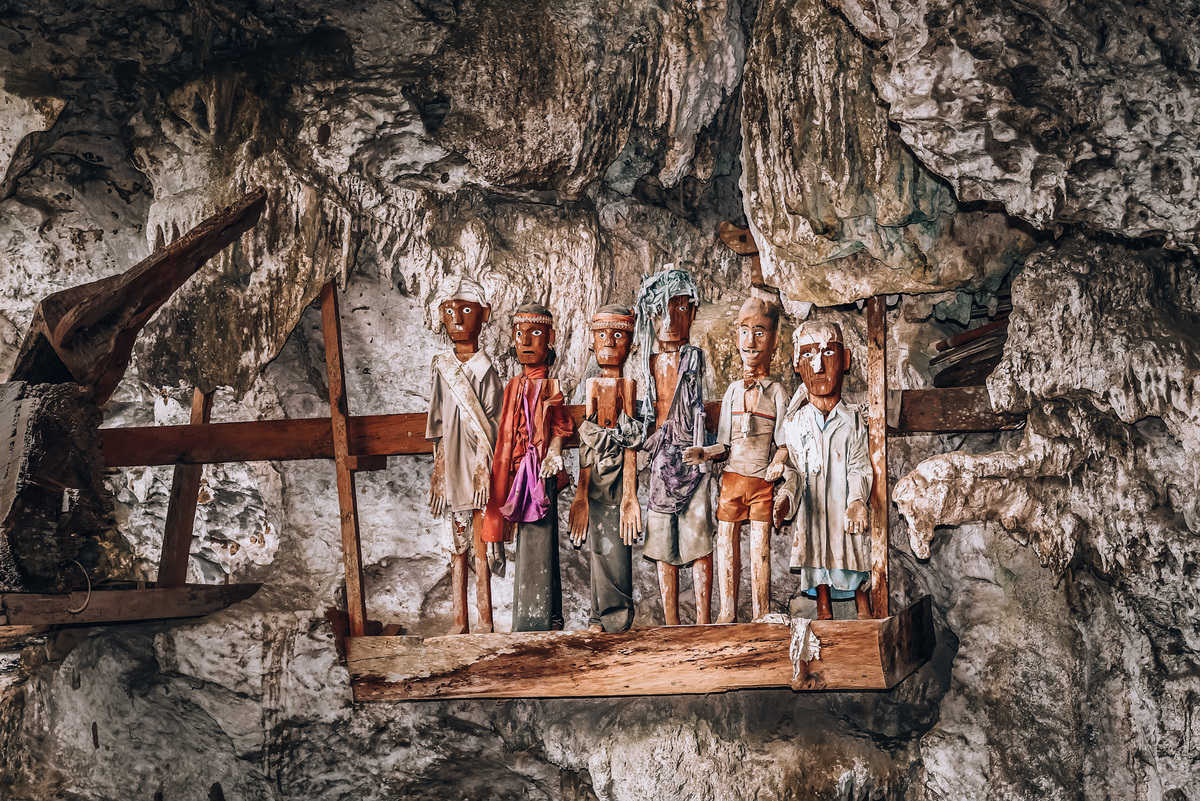Ke'te Kesu' is a quaint, traditional village concealed in the mountainous region of TanaToraja, South Sulawesi. It sits amidst a vast expanse of rice fields, and is the oldest village in the Sanggalangi district. The village is over 400 years old, and is said to have not changed at all in the last 400 years. Ke'te Kesu' functions as a sort of living museum, where one can experience first-hand the culture and traditions of the ancient Torajan people. Kete Kesu is probably most recognized for its fascination with death, as shown through their extravagant funeral ceremonies, hanging graves and decorative burial sites. The Ke’te Kesu’ are said to have the most well-preserved megalithic culture and death-celebrating traditions in all of Toraja.
This timeless town is home to about 20 families. It is comprised of eight “Tongkonan”, set in rows facing each other, complete with connected rice barns. The walls of the Tongkonan are adorned with beautiful carvings and buffalo horns, which serve as a mark of the homeowner’s status. A Tongkonan is the traditional house of the Torajan people, distinguished by its oversized boat-shaped roof. The construction of Tongkonan is a laborious task, and usually requires the help of all family members. In the original Toraja Society, only those of noble blood were given the right to build Tongkonan, while the common people lived in smaller, less elaborate houses.
Not far behind the Tongkonan, menhirs rise from the rice fields, marking the way to the eerie hill of Bukit Buntu Ke’su. Bukit Buntu Ke’su is an ancient burial site, estimated at over 700 years old. The rocky hillside is scattered with human skulls and bones, some piled high into large canoe-shaped vessels. The face of the cliff is hollowed with caves, which are ancient crypts. The caves were carved by masters of their skill, and take many months to make.
According to tradition, those of noble status were buried in higher holes, while commoners rested at the foot of the hill. Torajans believe that the higher one is buried, the easier the pathway to Paradise. Haunting, life size tau-tau, which are effigies of the dead, perch high across face of the cliff. Built to resemble the deceased, they stand watch outside each tomb, as symbols of each cave’s “inhabitants.”Some of the tombs are secured with iron bars to prevent the theft of these. Coffins also hang from the walls of the hill, shaped in various forms of dragons, pigs, and buffalo. The wooden crates were engraved with great accuracy and beauty, but are now crumbling with age.
The people of Ke’te Kesu’ are renowned as highly skilled craftsmen. Unique ornaments of bamboo and stone are carved in abstract and geometric patterns, seemingly without the use of mathematical calculations. Many souvenirs can be bought in and around the Ke’te Kesu’ village including coasters, jewellery, wall hangings, tau-tau, and even traditional weapons. Coasters, bracelets and necklaces are sold for a few thousand rupiah, while intricate wall hangings and engraved paintings can be priced at a few million rupiah.
One of the Tongkonan has been converted into a museum, displaying strange, historic objects of ancient customs. Chinese ceramics, sculptures, daggers and machetes, and even a flag, said to be the first flag flown in Toraja. The Museum also conducts bamboo craft workshops for those who would like to try their hand at this skill.
Ke 'te Kesu' Village is just one of Toraja's majestic heritages you must visit. Find more here!


















